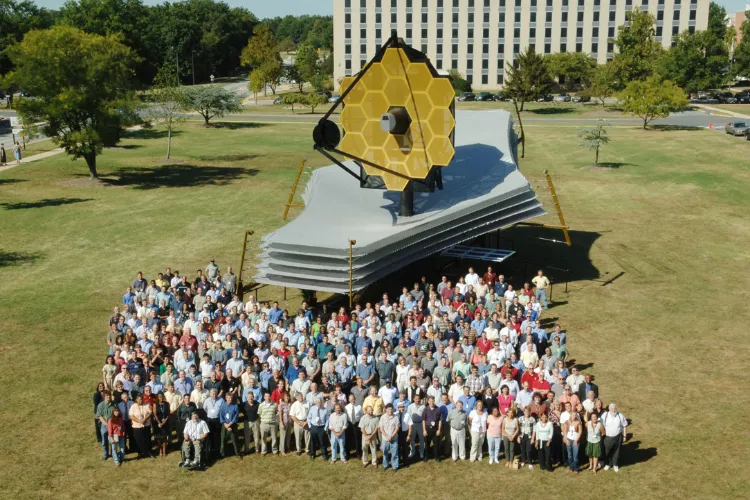.jpg)
New Delhi
On October 4, 1957, when the USSR was going to launch its first satellite in space, a family in Lucknow, Uttar Pradesh, got together in the backyard of their house to watch a spectacle on their black and white television set. To a young girl sitting with her family and cheering as the satellite went into space, it was a life-changing experience. She wanted to know more about Space and decided to study the subject.
In December 2022, this young girl emerged as one of the scientists associated with the National Aeronautics and Space Administration, the space agency of the USA’s game-changing discovery of a part of the universe that was beyond human comprehension and reach so far.
Dr. Hashima Hasan, is the Deputy Project Scientist, of the James Webb Space Telescope, which discovered and gave to the world of science the sharpest images of expo-stars and clusters of galaxies once considered beyond human reach.
The first four pictures of the peaks and troughs of a cluster of distant galaxies released by NASA in December 2022 showed parts of the universe as they were 13 billion years ago. This discovery has changed perception and understanding about the universe, and its origins.
Our faces right now ↘️ https://t.co/KERdZtqLTe
— NASA Webb Telescope (@NASAWebb) July 12, 2022
The Lucknow-born Hashima Hasan is also the Education and Public Outreach Lead for Astrophysics and has been associated with several key projects of the space agency. He joined NASA headquarters in 1994.
Dr. Hasan received a doctorate from the University of Oxford, U.K., in Theoretical Nuclear Physics. She conducted post-doctoral research and taught Theoretical Nuclear Physics, and Environmental Science in universities.
In a NASA podcast, Dr Hasan said when she was in class 6, a teacher told students that anything could be achieved if they worked hard for it. The teacher’s statement had a profound impact on her and that is when she chose science as a core subject for higher studies.
Hasan hails from a well-educated family and that too helped her become a scientist. Her uncle Dr. Husain Zaheer, has served as the Director-General of the Council of Scientific and Industrial Research (CSIR).
Her aunt Dr Najama Zaheer was a Biologist, and she also motivated her.
In the same podcast, Dr Hasan recalled that her mother had full faith in her and she was also a force in pushing her to pursue a career and ambition. However, the most defining moment for her choice of subject was the launching of the Sputnik-1.

According to a report by The Indian Panorama, Hassan started her research on nuclear physics at the Bhaba Atomic Research Centre (BARC). Upon her return to the US, she was hired by the newly established Space Telescope Science Institute to write the simulation software for the optics of the soon-to-be-launched Hubble Space Telescope. She also took up optics and astronomy.
Her stint at the Space Telescope Science Institute and a keen interest in optics and astronomy paved the way for her journey to NASA as she was presented with an opportunity to correct an optical error that the software in the Hubble Telescope had developed.
She graduated with a BSc degree from Lucknow University and a master's degree in Physics from Aligarh Muslim University (AMU). She was conferred with a Gold Medal for her performance in academics in the AMU.
ALSO READ: India can't be more Arab than Arabs in supporting cause of Palestine
According to the NASA website, Dr. Hasan has published articles in various peer-reviewed journals, such as the Astrophysical Journal, Icarus, Publications of the Astronomical Society of the Pacific and the list continues. She has been honored with prestigious awards and fellowships throughout her outstanding career, including the NASA HQ Exceptional Performance Award in 2008, National Research Council Resident Research Associate from 1981-1983, Commonwealth Fellowship from 1973-1976, and received a gold medal for Physics and merit award as a student.
